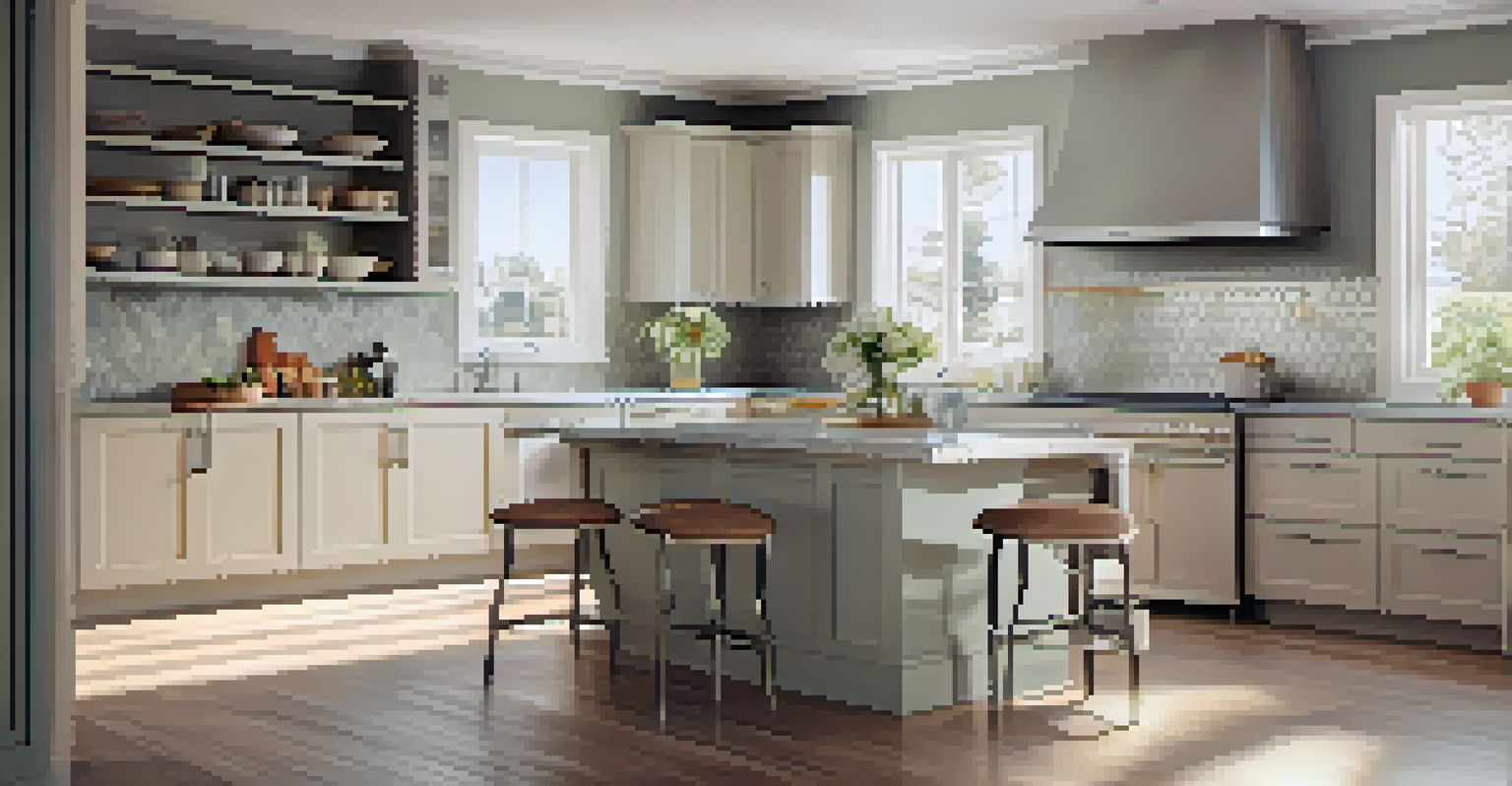Understanding Secured vs. Unsecured Loans for Renovations

What Are Secured Loans and How Do They Work?
Secured loans are financial products backed by collateral, typically your home. This means that if you fail to repay the loan, the lender has the right to seize the asset to recover their money. Common examples of secured loans include home equity loans and mortgages, where your property acts as security.
The best way to predict the future is to create it.
The primary advantage of secured loans is often lower interest rates. Since the lender has collateral, they face less risk, which can translate into favorable borrowing terms for you. This is particularly beneficial for significant renovations, as it can help stretch your budget further.
However, it's crucial to remember that using your home as collateral puts it at risk. If you encounter financial difficulties and can't make your payments, you could potentially lose your home. Therefore, it's essential to weigh these risks carefully before proceeding.
Understanding Unsecured Loans and Their Benefits
Unsecured loans, on the other hand, do not require collateral, meaning you won't risk losing your home. Instead, lenders base their decision on your creditworthiness and income. Personal loans and credit cards often fall into this category, providing flexibility for smaller renovation projects.

The flexibility of unsecured loans can be appealing, especially if you need quick access to funds without the hassle of appraising your home. They can be used for anything from a minor kitchen update to a bathroom remodel, making them a versatile choice for many homeowners.
Secured Loans Lower Interest Rates
Secured loans, backed by collateral, typically offer lower interest rates, making them a cost-effective option for larger renovation projects.
However, unsecured loans usually come with higher interest rates compared to their secured counterparts. Without collateral, lenders perceive a greater risk, which can lead to steeper repayment costs over time. Being aware of your budget and repayment capacity is essential before taking this route.
Comparing Interest Rates: Secured vs. Unsecured
When considering loans for renovations, interest rates play a significant role in your overall financial picture. Secured loans often feature lower interest rates due to the collateral involved, which can save you money over the life of the loan. This can be especially advantageous for larger renovation projects that require substantial funding.
An investment in knowledge pays the best interest.
On the flip side, unsecured loans typically have higher interest rates, making them more expensive in the long run. If you're only borrowing a small amount, the difference might not be as impactful, but it’s still an important consideration. Understanding these rates can significantly influence your decision.
Ultimately, choosing the right loan type depends on your personal financial situation and the scale of your renovation. A solid understanding of how interest rates affect your payments will help you make an informed choice that aligns with your financial goals.
Loan Terms: What to Expect from Each Type
Loan terms can vary significantly between secured and unsecured loans, affecting how long you’ll be repaying the borrowed amount. Secured loans often come with longer repayment periods, which can range from 10 to 30 years. This extended term can reduce your monthly payments, making it easier to manage your budget during renovations.
In contrast, unsecured loans typically have shorter terms, often ranging from 1 to 7 years. While this can lead to higher monthly payments, it means you’ll be debt-free sooner. This can be appealing if you want to ensure that your renovation doesn’t linger on your financial obligations.
Unsecured Loans Offer Flexibility
Unsecured loans don't require collateral, providing flexibility for smaller renovation needs, though they usually come with higher interest rates.
Understanding the loan terms is essential for aligning your renovation project with your financial strategy. Whether you choose a long-term secured loan or a short-term unsecured option, knowing the implications of each will help you plan effectively.
Evaluating Your Financial Situation Before Choosing a Loan
Before diving into the world of secured and unsecured loans, it’s vital to evaluate your financial situation. Take a close look at your credit score, income stability, and existing debts. This assessment will provide a clearer picture of which loan type is more suitable for your needs.
For instance, if you have a good credit score and a stable income, you might qualify for favorable terms on an unsecured loan. Alternatively, if you’re comfortable using your home as collateral and need a larger sum, a secured loan could be the way to go. Knowing your financial landscape will guide your decision-making process.
Additionally, consider your long-term financial goals and how a loan fits into that picture. Whether you opt for a secured or unsecured loan, ensuring it aligns with your overall financial health is key to a successful renovation.
The Importance of Shopping Around for the Best Rates
When it comes to loans, not all lenders are created equal. Shopping around for the best rates and terms is crucial, whether you're considering a secured or unsecured loan. Different lenders may offer varying interest rates, fees, and terms, so taking the time to compare can lead to significant savings.
Online comparison tools have made this process easier than ever. By entering your information, you can quickly see multiple offers, helping you identify the best deal for your renovation project. This can empower you to negotiate better terms based on competing offers, ensuring you don’t leave money on the table.
Evaluate Your Financial Situation
Assessing your credit score, income, and existing debts is crucial for determining which loan type—secured or unsecured—best fits your renovation goals.
Remember, the goal is not just to secure a loan, but to find one that makes financial sense for you. Diligently researching and comparing options can help you make an informed decision that supports your renovation dreams without breaking the bank.
Making the Right Choice for Your Renovation Project
Choosing between secured and unsecured loans for renovations ultimately depends on your unique circumstances. If you need a larger sum of money and are comfortable using your home as collateral, a secured loan might be the best fit. However, if you prefer to avoid risking your home and need a smaller amount, an unsecured loan could be more appropriate.
Consider not just the immediate financial aspects, but also your long-term goals. Think about how each loan type fits into your overall financial health and future plans. It’s essential to choose a loan that not only meets your renovation needs but also supports your broader financial objectives.

In the end, whether you opt for a secured or unsecured loan, being informed and thoughtful about your choice will set you up for success in your renovation journey. With the right preparation and understanding, you can turn your renovation dreams into reality while keeping your finances intact.